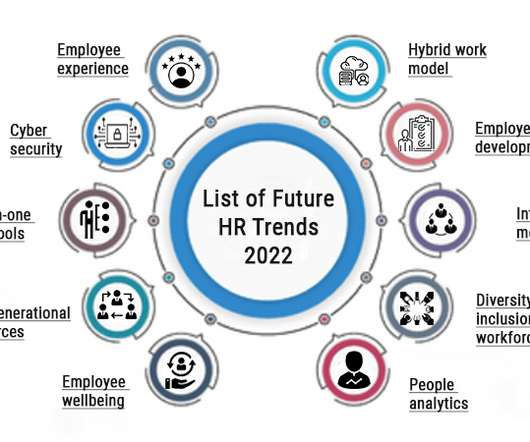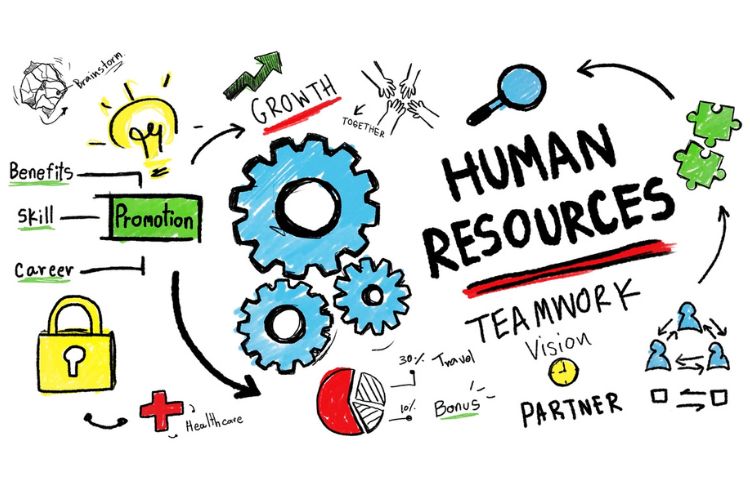11 important HR trends you should know for 2023
Published

Human resources (HR) trends are practices and techniques commonly used by companies to understand and meet employee needs, add value to the company, and align specific functions with business needs. As industry and society evolve, many HR departments are updating their practices to improve the company and employee experiences. HR managers who want to increase the efficiency and value of their organization can benefit from learning about these trends.
Why is it important to know HR trends?
It's important to stay informed about HR trends because market climates, employee needs, industry practices and company policies often change over time and with technological developments. World events and social changes often impact how employees and companies approach everyday work. For example, many employees want more flexibility as technology now offers many options for working from home. Companies often observe these trends and incorporate them into their organization to improve workflows and employee experiences. Monitoring trends often helps companies determine what changes could improve the business.
1. Treat diversity, equity and inclusion (DEI) as an integral strategy

Those : humanresourcestoday.com
As the country becomes more diverse, many companies are trying to represent this diversity at all levels of the organization. This is particularly true for leadership positions. Treating DEI as an integral strategy means more than creating an inclusive workplace. It also means taking action to promote inclusion and ensure equality. This typically helps companies create a more positive employee experience. Many companies are making these efforts to specifically support people who have faced inequality in the workplace in the past.
Promoting discussions about DEI can often help companies change company culture. Companies that actively promote a diverse environment may actually attract more talented applicants. Below is a list of possible actions a company can take to ensure inclusion and equality across the workforce:
- Creating a zero-tolerance approach to bullying
- Ensuring diversity remains an important part of the workplace culture by having leaders model the behavior the company wants to see
- Addressing prejudice in diversity training
- Incorporating biased reviews into performance reviews
- Apply metrics to a company's key performance indicators (KPIs).
2. Learn the difference between listening to employees and listening to them
Many companies face the challenge of attracting new talent and achieving high employee retention rates. As people are constantly looking for better opportunities, some companies have developed a greater appreciation for their employees. These companies often change their communication style. The term "hearing" means perceiving sounds, while "listening" means listening carefully to someone. Companies that listen to their employees often do not focus on controlling a conversation or formulating a response until they have fully listened to an employee. Some leaders emphasize that when communicating with their employees, they should actively listen to truly understand their thoughts and concerns.
Active listening usually means making eye contact with the other person, taking notes, or really trying to understand why the person is relaying their message. This also includes waiting to answer until the other person has finished speaking, mentally processing the information, and then giving an answer. Listening to people usually shows respect and creates feelings of trust, validation and understanding. Empathetic listening usually leads to motivation and belonging. Here are some ways senior management professionals can improve their listening skills:
- Give one person your full attention and avoid multitasking
- Let the other person finish before answering
- Trying to understand the actual meaning of a person's message, including non-verbal cues
- Ask thoughtful questions
- Building a company culture that encourages employees to speak up
3. Upskill and reskill your workforce
Some companies have the feeling that newly hired employees, e.g. B. university graduates do not have all the skills they need for their work. Competent employees usually ensure that a company can grow and change today. This means that many companies are upskilling and retraining their employees. Upskilling refers to the process of learning new skills. Retraining means learning to do a different job with new skills. Retraining often helps companies create a more adaptable workforce, while upskilling provides employees with better opportunities for advancement.
Below is a list of actions a company can take to upskill and retrain employees:
- Promote training and development for all employees
- Rewarding successful development achievements
- Use of various training methods, such as face-to-face, online and hybrid training
- Give targeted feedback
4. Cultivate a positive company culture
Corporate culture includes attitudes, beliefs and behaviors of employees and management. As hybrid and work-from-home arrangements become possible, some companies are wondering how they can maintain a positive work culture. Many employees value a good work-life balance for all team members. The five elements of a positive work culture include relationships, peer support, communication, diversity and technology. Below is a list of ways employers can improve their work culture:
- Assist employees in maintaining relationships and building new relationships as new employees join
- Teaching employees how to work better together while providing resources to maintain that collaboration
- Adaptation of new communication technology
- Incorporating diversity, equality and integration into corporate strategy
5. Using data to improve employee experiences
Employers are increasingly placing more value on their employees' experiences to retain them, as many people seek better working conditions. Many companies have used technology and data to learn more about their employees' opinions and personal lives to improve employee engagement strategies and employee experiences.
Data can help new employees feel valued and supported in the form of a personalized onboarding program. Companies can also leverage data from professional rewards and recognition programs that highlight an employee's accomplishments. Emphasizing engagement with these programs can help some companies gain more data and insight into employee values.
6. Create more wellness initiatives

Those : study.com
More and more companies are placing emphasis on promoting the well-being of their employees in order to increase productivity, turnover and customer satisfaction. This includes various forms of well-being, e.g. B. in financial, social, mental and physical terms. Employees who feel good are more likely to perform better at work. Some examples of financial wellness initiatives include insurance for the elderly, tuition waivers, and access to financial planners. Examples of physical wellness include on-site exercise facilities or discounts on gym memberships in the employee's area.
Mental health wellness initiatives can include promoting communication between managers and colleagues, access to telemedicine providers, and a certain number of sick or rest days. Social wellness initiatives can include access to employee engagement platforms. Incorporating several of these initiatives into a workplace often helps employees focus better and be more productive because they can provide some relief across many channels.
7. Caring for family caregivers
Many employees care about other people in their lives while maintaining their careers, e.g. B. older parents, children and spouses. Managers often face the challenge of caring for these individuals at work and in their personal lives. Some companies value additional support and recognition for managers in order to ease the burden on them in carrying out their tasks. Below is a list of actions some companies are taking to provide additional support to managers:
- Formulate clear goals and expectations
- Obtaining and listening to feedback
- Recognition of efforts
- Providing additional tools and resources for task completion
- Providing more training opportunities
8. Emphasize the role of teams among employees
When employees work from home, joining a virtual team often helps them form new relationships and tap into new resources. Teams can contribute to a more positive work culture when all employees feel valued as equals among their peers. Many companies have even formed superteams that combine larger numbers of people and technologies to achieve higher levels of work performance. Successful teams often emphasize the role of a work culture that promotes growth, adaptability and resilience. Other factors that contribute to this success include the empowerment of employees through further training, retraining and mobility as well as the use of new technologies.
9. Implementing innovative recruiting
As companies compete for talent, some have begun using various tactics to attract and retain qualified applicants. Many companies are now using social media to connect with potential employees instead of using traditional job boards. This approach often helps recruiters target specific groups of candidates within a market on a social media platform. Because social media profiles typically contain more information about an employer, applicants today tend to prefer employers who are transparent about their values and goals.
Applicants also typically pay attention to the overall imagery and tone of the company's social media posts before applying for a job. Companies can advertise attractive benefits when they reach out to potential applicants via social media. This includes opportunities for advancement, monetary benefits, a competitive salary, flexibility at work and a healthy work-life balance.
10. Balancing the flexibility of remote work with on-site business needs

Those : itmunch.com
Some employees prefer working in the office to working in the office. Many employers have developed strategies to meet the needs and preferences of their employees while meeting local business needs. Typically, companies can encourage employees to return to the office with some of these strategies:
- Creating an equal back-to-office strategy that is responsive to those who can and cannot work remotely
- Provide a place of community and engagement
- Use rewards and recognition as motivation
- Communicate with transparency
- Apply change management strategies
11. Hire employees based on their skills
As technology advances, many jobs require new skills and competencies. This is particularly true with the rise of artificial intelligence, which has both automated and created jobs. Many companies have placed an emphasis on skills and competencies when hiring new employees to meet the needs of the current industry. This also means that some companies are specifically looking for specific skills rather than a person's degree or certificate. Hiring employees based on their skills typically increases the number of potential external applicants, but also the advancement opportunities for internal employees. This means that an employee can acquire educational qualifications for specific industries.








